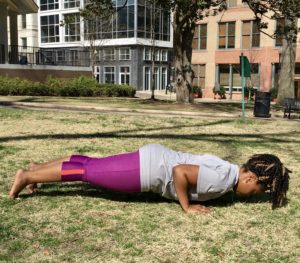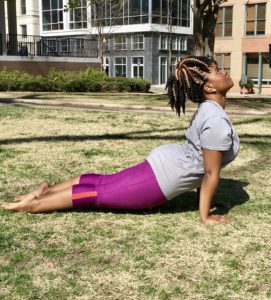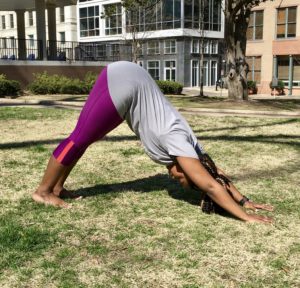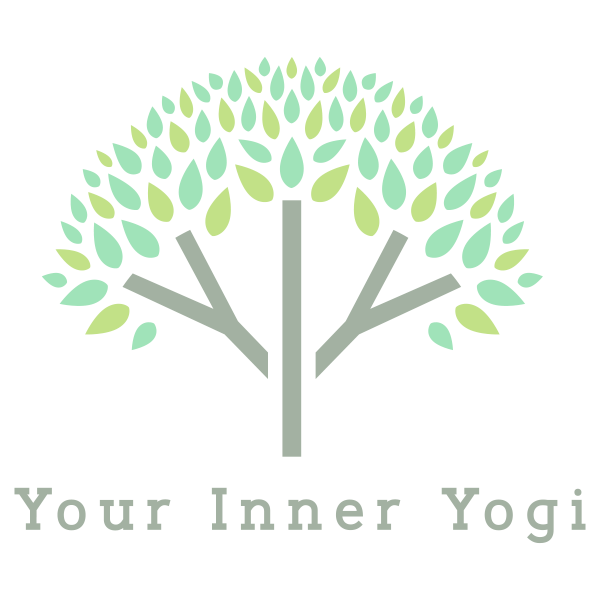
Yoga Vocabulary: What’s a Vinyasa?
There are endless reasons that we may come to our mats on any given day, with learning usually somewhere toward the top of the list. In just one class you may learn something new about yourself physically or emotionally, uncover a new way to approach challenges, learn a new pose or new way to approach a pose, learn a new benefit of a pose…the list goes on. But you also may feel like you’re learning a new language, which can be a bit intimidating. For example, the teacher may ask students to “take a vinyasa” during class. If you’re new to your mat or new to a particular class, you wouldn’t be the first person to raise a brow and think isn’t that what I’m doing here? I’m taking a vinyasa class…hello! Take a breath. We’ve got you covered.
What’s it Mean?
Like many words in the English language or in Sanskrit (the ancient language from which this and other words heard in yoga classes are derived), vinyasa has more than one application. Author and renowned ashtanga vinyasa yoga teacher David Swenson describes it as a “precise alignment of breath and yoga.” This is a great definition to start with since at its core, vinyasa means to place in a certain way. That certain way is movement guided by the breath.
So, any sequence of poses where each is connected to an inhale or exhale can be considered vinyasa, you ask? Fundamentally, yes. So, “taking a vinyasa” is a freestyle session? Read on.
Taking a Vinyasa
When a teacher cues students through a vinyasa or to take one on his or her own, it’s essentially an invitation to flow through specific poses to connect or transition parts of your practice. These specific poses include plank, four-limbed staff pose (a low plank or variation), upward facing dog and downward facing dog. You may find yourself taking a vinyasa in between right and left sides of a pose, to transition from standing to seated poses, and so on.
While not exactly a freestyle, there is always freedom in a yoga class to modify – or skip – what doesn’t serve you at the moment. For example, a vinyasa that’s more accessible for those who are new to their practice, working through injuries or exploring what works in their bodies may include modifying four-limbed staff pose to keep the knees, chest and chin down. It may also include swapping upward facing dog for cobra pose with the chest up while the hips, legs and tops of the feet make contact with the mat. Let’s break it down.
The pose: Plank (kumbhakasana)
- The breath: Inhale.
- The movement: Place your palms underneath your shoulders with straight arms and a long spine. Extend your legs behind you with the feet separated hip-distance. Press the balls of the feet into the mat. Tuck your pelvis and gaze outward off of the tip of the nose.
- The modification: Knees down.
[check out this video from Yoga Journal to help you find your plank pose]
The pose: Four-Limbed Staff (chatarunga)
- The breath: Exhale.
- The movement: Lower toward the floor until your elbows are bent and close to your rib cage. The palms and balls of the feet will press into the mat, while the rest of the body is strong, long and engaged. Gaze outward off of the tip of the nose.
- The modification: With the hips lifted off of the floor, lower the knees, chest and chin to the mat. Try to keep the elbows close to the sides of the body as you lower.

The pose: Upward Facing Dog (Urdhva Mukha Svanasana)
- The breath: Inhale.
- The movement: Press into your palms to straighten the arms. Roll the shoulders back and down to open the
chest. Come onto the tops of the feet and press them into the mat as the knees lift. Soft gaze up. - The modification: Lift the chest slightly while keeping the ribs on the mat.

The pose: Downward Facing Dog (Adho Mukha Svanasana)
- The breath: Exhale.
- The movement: Curl the toes under and lift the hips up and back. Press the heels toward the mat with the feet still separated hip-width. Press into the palms and tuck the chin toward the chest, gazing toward the navel.
- The modification: Lower the shins to the mat. Sink the hips back and down toward the heels.

Taking a Vinyasa Class
Vinyasa is a staple in several yoga styles, including ashtanga vinyasa, power yoga and vinyasa flow. Depending on the class style you’re in, you may be cued to step your feet between your hands, forward fold and rise up after downward facing dog. Another option might be to come through to a seated pose on your mat. You may even enter a new pose from downward facing dog. No matter what follows your vinyasa, this mini-sequence can help you reconnect with your breath, build endurance, keep energy and heat in the body, and keep your awareness engaged. A vinyasa also offers a moment to check in with yourself and dial back or modify as needed. As your practice progresses, the vinyasa movements may become more familiar, but each repetition offers a chance to learn something new about your body in that exact moment.
The next time you’re asked to take a vinyasa, take a journey with your breath and body. Most of all, enjoy the ride!
Want to learn more? Ashtanga Yoga: The Practice Manual by David Swenson has a beautiful explanation of the vinyasa’s role and is a great companion for vinyasa-based practices of all levels. You can also check out this article on Yoga Training Guide to learn more about vinyasa energy and history, authored by David’s brother, Doug.
About the Author
Caroline Miles teaches and blogs for Your Inner Yogi. A transplant to Memphis by way of the D.C.-metropolitan area (and New Orleans), Caroline enjoys Ashtanga Vinyasa, good beats and dry humor. Yoga is a large part of her journey to live – and help others live – an authentic life centered upon well-being.

